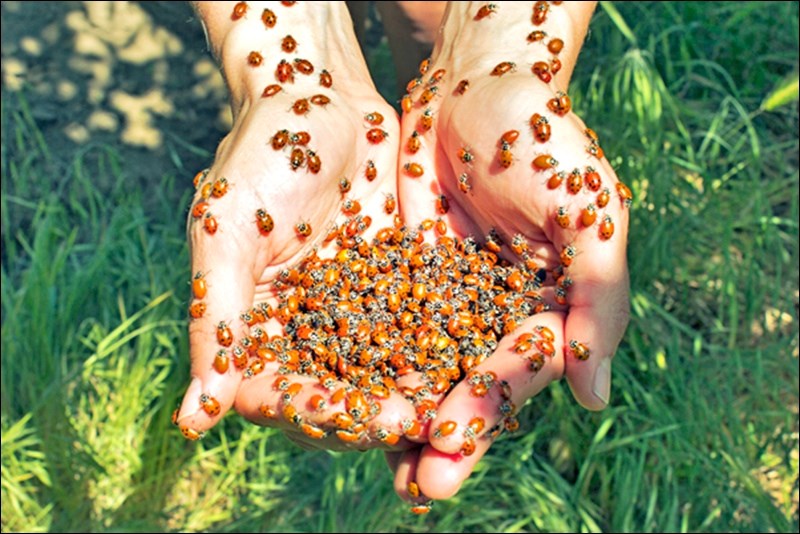Now summer is almost officially upon us, and most days there is more warmth in the air, there is also evidence of many bug-like critters enjoying the sun.
The world of insects is fascinating, as, to the gardener, their life cycle, the colonies they live in and their ability to hunt for food all make them remarkable. Even the thought of those little critters walking across your garden in perspective must be like walking from Saskatoon to Regina or Edmonton depending on the size of your garden area.
Sometimes the response by gardeners to these critters is to squish or spray now and be rid of those ugly and damaging pests. However, not all bugs/insects are a danger to the plants in our gardens. Some present a more neutral side, doing neither harm nor good, happily living their life in the garden world. Other critters are helpful to the gardener by feeding on insects that do harm to plants thus providing safe biological controls for some of the most common garden pests.
Nature is also a remarkable thing with creating a balance that stewards of the land constantly disrupt. It is important for all gardeners and other stewards of the land to learn about the individual critter and its life cycle to determine whether it is friend or foe.
Beneficial insects (sometimes referred to as bio-control agents) are naturally occurring in nature or readily available to farmers, growers and others. They fall into two basic categories with some being predatory and some being more parasitic in nature. Some do a little “host feeding” of both the parasitic and predatory nature. Some of the common predacious beneficial creatures are beetles, wasps, mites and true bugs. The more parasitic beneficial creatures are often mini-wasps and nematodes.
Introducing biological control can be effective but does not act like a pesticide solution. For instance if you have a fly problem, you can spray a multitude of products on these flies and effectively gain control for a while. However, the flies evolve quickly and often become immune to the chemical control agents, which in turn causes us to use more toxic products to gain the same control.
A biological works by interrupting the life cycle of the problem critter, (in this case the fly) and over time gains control of the population. This is not an instant fix but takes some time to be effective. The predator or parasite grows in number in response to the host and then decreases in number as the host dies off. This is a somewhat similar scenario to the coyote and the rabbit, or many other examples in our ecosystem.
My introduction into the beneficial world occurred when I was an intensive livestock producer and created an ideal environment for many species of flies by providing livestock, bedding debris and my home landscape to aid them in living a happy life. As I am less than enamored with flies, I strove to find a control measure that was sustainable but also economically feasible and effective.
I discovered parasitic wasps whose only purpose in life is to source out the pupae of flies, and lay their eggs in those pupae. The parasitic wasp larvae develop, consume the fly and hatch into the adult form of a parasitic wasp and happily look for more fly pupae to procreate. Over time, what results with the correct level of application is no more flies. For me and countless others who embrace this method of control, we now enjoy a much more pleasant outdoor experience even if we do keep critters.
There are many other beneficial bugs/insects in our outdoor living space. These include ladybugs, lacewings, ground beetles, minute pirate bugs, syrphid flies and many more. In order to truly enjoy the world of beneficial creatures, it is important to remember many of these tiny and not so tiny critters may have a different appearance depending on the stage of their lifecycle. After all, before the butterfly, comes the worm.
— Hanbidge is a horticulturist with the Saskatoon School of Horticulture and can be reached at 306-931-GROW(4769); by email at growyourfuture@gmail.com; facebook @schoolofhort; twitter @hortiuclturepat; Instagram: Patyplant or check out our website at saskhort.com.



